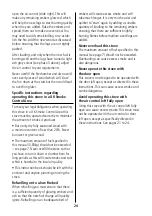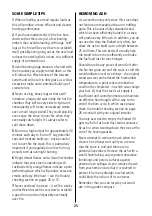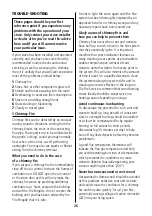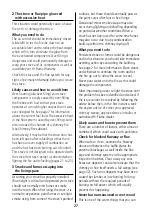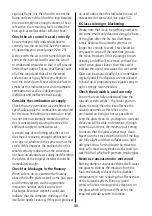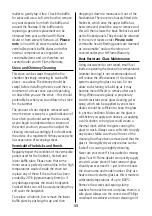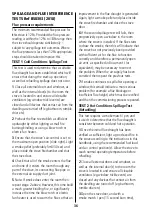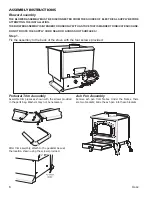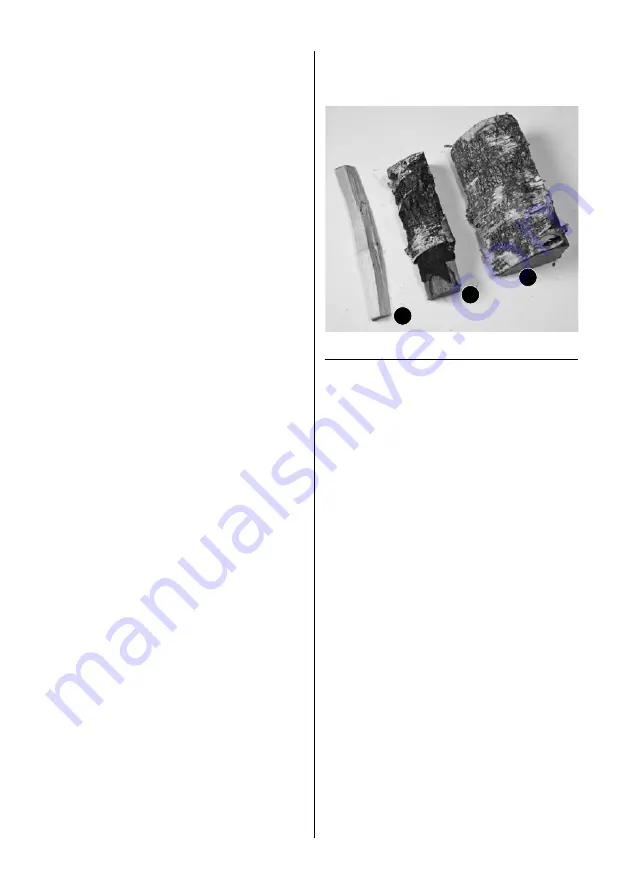
OPERATING YOUR STOVE
General principles
When lighting your stove you will need to get
the temperature in the firechamber as high as
possible as quickly as possible. This is critical
in creating a good updraught or ‘draw’ within
the flue system, especially when it is particularly
cold outside.
It is also important to maintain the operating
temperature of the firechamber above 120ºC,
below which combustion is incomplete and
creosote tars are formed within the combustion
gases. Burning the stove like this will create
dull orange flames loaded with soot and will
not actually generate much heat.
Use small firelighters specifically designed
for stoves and avoid trying to light the fire
with paper as the ash it leaves behind can
‘smother’ and reduce the effectiveness of
the ash bed. If you have good dry kindling or
sticks then paper should not be needed.
The best sizes for the logs
The recommended log length for this stove
is 250mm long, however the thickness or
diameter of the logs used at each phase of
lighting and refuelling is just as important.
For example, if the kindling wood is too large
then this will not light well and will be slow to
get started. Logs that are too heavy and big
when added at the wrong time can also be
problematic as they can ‘kill’ the fire. Below is
our rough guide for the various thickness of
logs needed for ease of use during a complete
burn cycle. See photograph right.
Kindling
(A)
This is generally finely chopped
wood, approximately 5 to 10mm thick from
your supply of logs. Alternatively use soft-
wood, or dried twigs and small branches
which have also been fully seasoned.
Lighting Logs (B)
These are slightly thicker
logs, approximately 25 to 50mm across.
Refuelling Logs (C)
These should be
approximately 75 to 100mm across. Thicker
logs should ideally be split down to this size.
1 The Lighting Phase
Air Control:
Fully open
Stove Door:
Slightly ajar (optional)
Fuel Load:
Kindling
During the lighting phase the air control
should always be fully open (slide to right).
Use two handfuls of smaller pieces of kindling
(equivalent to the weight of a typical log)
layered criss-cross or ‘wig-wam’ style over one
or two firelighter. This will usually get the fire
well established and up to operating temperature
very quickly.
A flue with a sufficient updraught will not
usually require the stove door to be left ajar.
However, If your fire appears to be slow at
getting the kindling burning quickly then this
could indicate a weak updraught, typically
caused by the flue being cold. In which case
the stove door should be left slightly ajar to
boost the supply of combustion air which will
help quickly establish the fire and warm the
flue. Remember, never leave a burning stove
unattended when the door is open. When the
fire is burning well you must then shut the
door. However, if this slows the flame pattern
dramatically then continue with the door ajar
C
B
A
22

















